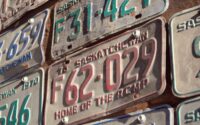Best Way to to Check a Stolen Vehicle Database
Have you ever wondered if that great deal on a used car might come with some hidden baggage? The thrill of finding the perfect vehicle can quickly turn sour if it turns out to be stolen. Fortunately, there are resources available to help you avoid such pitfalls. One key tool at your disposal is the police stolen vehicle database. This comprehensive system allows potential buyers and concerned citizens alike to check whether a vehicle has been reported as stolen.
By accessing this vital information, you can protect yourself from costly mistakes and ensure peace of mind while navigating the world of auto purchases. Let’s dive into what a stolen vehicle database actually is, why checking it matters, and how you can utilize these databases effectively.
What is a Stolen Vehicle Database?
A stolen vehicle database is a centralized system that tracks vehicles reported as stolen. Law enforcement agencies across various regions contribute to this repository, ensuring accurate and up-to-date information.
These databases contain essential details such as the make, model, year, and Vehicle Identification Number (VIN) of each stolen vehicle. This data helps authorities identify and recover stolen cars more efficiently.
Many states maintain their own local databases. However, some national databases compile information from multiple sources for broader accessibility.
The primary goal of these databases is to deter theft and assist in recovery efforts. By monitoring trends in vehicle thefts, police can deploy resources effectively to combat crime in their areas.
Why it is Important to Check the Database
Checking a stolen vehicle database is crucial for several reasons. First, it protects you from inadvertently purchasing a stolen vehicle. Imagine investing your hard-earned money only to discover that the car belongs to someone else.
Second, verifying a vehicle’s status helps in reducing crime rates. When potential buyers check these databases, they discourage thieves from targeting specific vehicles. Awareness creates accountability within communities.
Additionally, knowing the history of a vehicle can be essential for insurance purposes. Many insurers require proof that your car isn’t stolen before issuing coverage or claims.
Checking this database promotes peace of mind while driving. You’ll feel more secure knowing your vehicle has no hidden issues tied to theft or illicit activities associated with it.
Ways to Check the Database
Checking the police stolen vehicle database can be done in several effective ways. One of the simplest methods is to visit your local law enforcement agency’s website. Many police departments offer online access, allowing you to search for stolen vehicles by entering specific details like make, model, and VIN.
Another option includes using specialized websites dedicated to tracking stolen cars. These platforms aggregate data from various sources, making it easier to find information quickly.
Mobile apps also provide convenient access on-the-go. Some applications are designed specifically for checking vehicle status against national databases.
If you prefer a more hands-on approach, visiting a physical location such as a DMV or police station can yield results too. Staff members there may assist in searching their records directly.
Whichever method you choose, ensure that you’re accessing reliable and up-to-date information for accurate results.
Online Databases vs Physical Databases
When it comes to accessing a police stolen vehicle database, the medium can make a big difference. Online databases offer convenience and speed. With just a few clicks, you can search for information from anywhere with internet access.
Physical databases, on the other hand, require more effort. You might need to visit a law enforcement office or local agency. This approach often involves waiting in line and filling out forms.
Online platforms typically provide advanced search filters that streamline your inquiries. They also update their  records regularly, ensuring you have the latest information available at your fingertips.
records regularly, ensuring you have the latest information available at your fingertips.
However, not everyone has reliable internet access. In some regions, physical databases remain essential resources for checking vehicle status effectively. Each method has its pros and cons—understanding them helps you choose wisely based on your situation.
Tips for Using Stolen Vehicle Databases
When using stolen vehicle databases, start by gathering essential information about the vehicle. This includes the VIN, make, model, and year. The more details you have, the easier it will be to find relevant results.
Always verify that you’re accessing a reputable database. Official police or government sites are usually your best bet. Be wary of third-party websites that may not provide accurate data.
Consider checking multiple databases for comprehensive results. Different platforms might list various vehicles due to varying reporting practices.
Stay patient during your search process. Sometimes it can take a moment to sift through records before finding what you need.
Keep track of your searches for future reference. Documenting your findings can help if you need to report any suspicious activity later on.
What to Do if You Find a Match
If you discover a match in the police stolen vehicle database, your next steps are crucial. First, do not attempt to confront anyone who may be in possession of the vehicle. Your safety is paramount.
Instead, document all relevant details about the situation. Take note of the vehicle’s make, model, color, and any distinguishing features.
Next, contact local law enforcement immediately. Provide them with all information gathered from your search and any observations you’ve made.
They will guide you through the process and may ask for further details or evidence if necessary. It’s important to cooperate fully with their investigation.
Keep communication lines open and follow up as needed but let authorities handle the situation from there. This ensures that everything proceeds legally and safely while protecting your interests throughout the process.
Conclusion
Checking a police stolen vehicle database is an essential step for anyone looking to buy or sell a vehicle. It helps ensure you’re making a safe transaction and protects you from potential legal troubles down the line.
With various methods available—both online and offline—you can easily access this vital information. Whether you’re relying on official government resources or utilizing private services, understanding how to navigate these databases equips you with the knowledge needed to make informed decisions.
If you ever find that a vehicle you’re interested in has been reported as stolen, take immediate action by contacting local law enforcement. They will guide you through the necessary steps and help resolve any issues that arise.
Being proactive about checking vehicle histories not only safeguards your investments but also contributes to reducing crime rates overall. Stay vigilant, stay informed, and embrace responsible car ownership practices for peace of mind on the road ahead.


